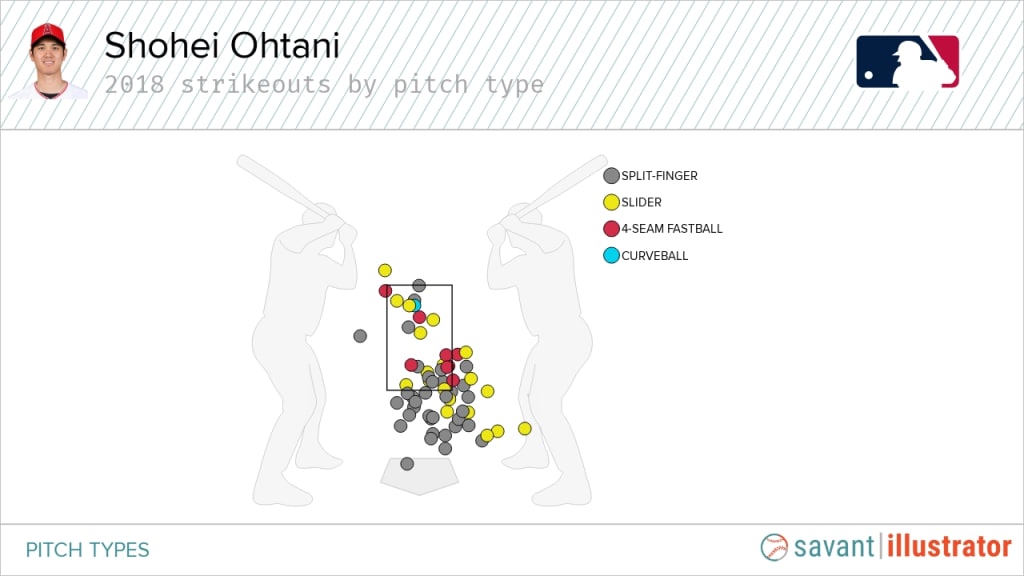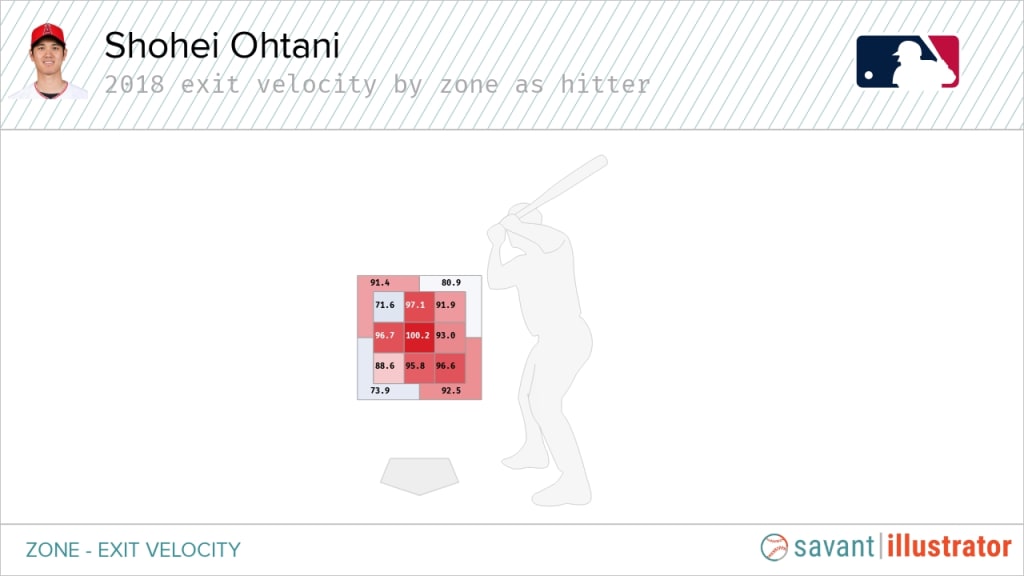This week alone, Shohei Ohtani has hit a homer over the batter’s eye in Spring Training and reportedly hit 100 mph in his 2021 debut on the mound. Are you ready for Shotime? Because it’s back, and looking like the 2018 version.
Starts on the mound by the Angels righty were appointment viewing that year, and he crushed the ball at the plate on days he wasn’t pitching. Ohtani showed us just how exciting Shotime can be, but we have yet to see it on that level again, as injuries have interfered. Ohtani has only pitched 1 2/3 innings over the past two seasons and is coming off a down season at the plate (.657 OPS).
Ohtani is still just 26, entering his fourth Major League season. There’s plenty of reason to believe that he will succeed as a two-way player again, and it’s worth taking a look back at just how good he’s shown he can be at his best.
Here’s why watching Ohtani the pitcher and hitter will be so much fun in 2021.
PITCHING
At his best
The most important thing to know about Ohtani’s 2018 pitching results is that he had, quite possibly, the most unhittable pitch in baseball. He racked up 35 strikeouts on his splitter, which he used 22% of the time, while holding batters to just 2-for-55 (.036) in at-bats ending on the pitch. That was the lowest opponent batting average for any pitcher on any pitch in 2018, with at least 50 plate appearances ending on that pitch type.
He induced a 56.4% whiff rate on the pitch. That means that more than half the time, when a batter swung at his splitter, that batter missed. No starter had a higher whiff rate on a single pitch type (minimum 50 swings at pitch type). Further to the point: the most unhittable pitch in 2018, by multiple measures.
That wasn’t his only intriguing offering. He also threw in the triple digits. Ohtani averaged 96.7 mph on his four-seamer in 2018, including reaching 100.0 mph or higher seven times, fourth-most among starters, in just 10 starts. Even despite not pitching in 2019 and barely pitching in 2020, Ohtani owns three of the 15 fastest pitches thrown by starters since the start of 2018 -- and it’s three of the top eight, if we stick to traditional starters only.

And that’s not even to mention his breaking pitches, a slider and a curveball on which he allowed a combined .125 batting average and notched 20 strikeouts.
Recent struggles
Ohtani’s troubles from a pitching standpoint began with Tommy John surgery in 2018 and continued upon his brief return to the mound in 2020. For all of the excitement over his velocity at the start of his career, his fastest pitch in 2020 was 97.1 mph on Aug. 2 – good for most pitchers, but for Ohtani, one of the signs that something may have still been amiss. And while he pitched just 1 2/3 innings in 2020, he allowed seven runs and eight walks.
So Ohtani’s Spring Training pitching debut Friday brought good news. He reached 100 mph with his fastball, and his splitter looked nasty, too. And Twitter took notice -- part of how you know it was back.
HITTING
At his best
While 2018 Ohtani was tossing 95th-percentile fastball velocity and inducing a 96th-percentile whiff rate, he was also crushing the ball as a hitter. He was in the 95th percentile or better in average exit velocity, hard-hit rate, xwOBA, expected slugging and barrel rate. He made hard contact more than 50% of the time, including 16 batted balls at 110.0 mph off the bat.
His .545 xSLG, which is based on quality of contact, provides a window into just how solidly he was hitting the ball. Only seven players had at least 200 batted balls in ’18 with a higher xSLG: J.D. Martinez, Mookie Betts, Mike Trout, Christian Yelich, Khris Davis, Nelson Cruz and Joey Gallo. In other words, sluggers and MVPs.
He hit highlight reel-worthy homers, too. His third career home run, on April 6, went 449 feet. Overall, five of his 22 homers were at least 435 feet.
In his year as solely a hitter in 2019, Ohtani had a slight decrease in hard contact, but overall put up similar results to ’18. He had 97th-percentile average exit velocity and 89th-percentile hard-hit rate -- close to his debut season numbers.

Recent struggles
But Ohtani’s 2020 season at the plate did not include crushing the ball like he had in the past. Those percentile rankings dropped to 55th for exit velocity and 68th for hard-hit rate, far closer to the league average than he’d been in the past. His xBA indicated he should’ve hit a bit better than his .190 actual average, but a .234 expected mark wasn’t what Shohei Ohtani, Power Hitter had shown in the past.
Digging into what he did at the plate, it appears he just wasn’t seeing the ball as well. He saw just about the same percentage of meatball pitches in 2020 as in past years -- that is, pitches that were middle-middle, ready for crushing. But he swung at just 69.2% of them, after swinging at 79.4% of those in ’18 and 84.8% in ’19. And he didn’t capitalize when he did swing, hitting .286 with a .571 slugging percentage in at-bats ending on those pitches -- compared to .340 and .649, respectively, in 2018-19 combined.
Ohtani said early in Spring Training that there was a bad mechanical habit he’d picked up, too -- lifting his back left leg as he swings, something that started happening after his knee surgery in September 2019. He worked on eliminating that in the offseason to return to form and had a terrific swing that led to his monster homer on Wednesday.
PUTTING IT ALL TOGETHER
So, what does all of this mean for 2021? As noted above, Ohtani has looked great in Spring Training so far, on both sides of the ball. With his velocity back up to its 2018 heights for now, the possibilities for the pitcher seem limitless, while his ability to crush baseballs certainly looks like it’s returned as well.
Just how valuable could Ohtani be for the Angels? Dan Szymborski’s ZiPS projections on FanGraphs have Ohtani with 1.6 WAR as a hitter and 1.1 WAR as a pitcher, for a total of 2.7 WAR under its calculation method. As with any projection system, there are multiple outcomes or possibilities. The aforementioned numbers are essentially a 50th-percentile projection for Ohtani, but of course, there’s always the possibility he does better.
With that in mind, Szymborski was kind enough to run what a 90th-percentile projection might look like for Ohtani the hitter -- in other words, a best-case scenario. In that, he’s projected to slug .534 with 25 homers and 2.9 WAR. There isn’t an equivalent projection for a 90th-percentile pitching Ohtani, but we can make an educated guess. He was worth 1.1 WAR, per FanGraphs, in 2018, when he made 10 starts with a 3.31 ERA. It stands to reason that if he can recapture that form in 2021, he could be worth at least 2-2.5 WAR from that side, putting the overall total close to at least 5 WAR, with value coming from both sides of the ball.
And if Ohtani truly reaches his ceiling? The sky's the limit.

